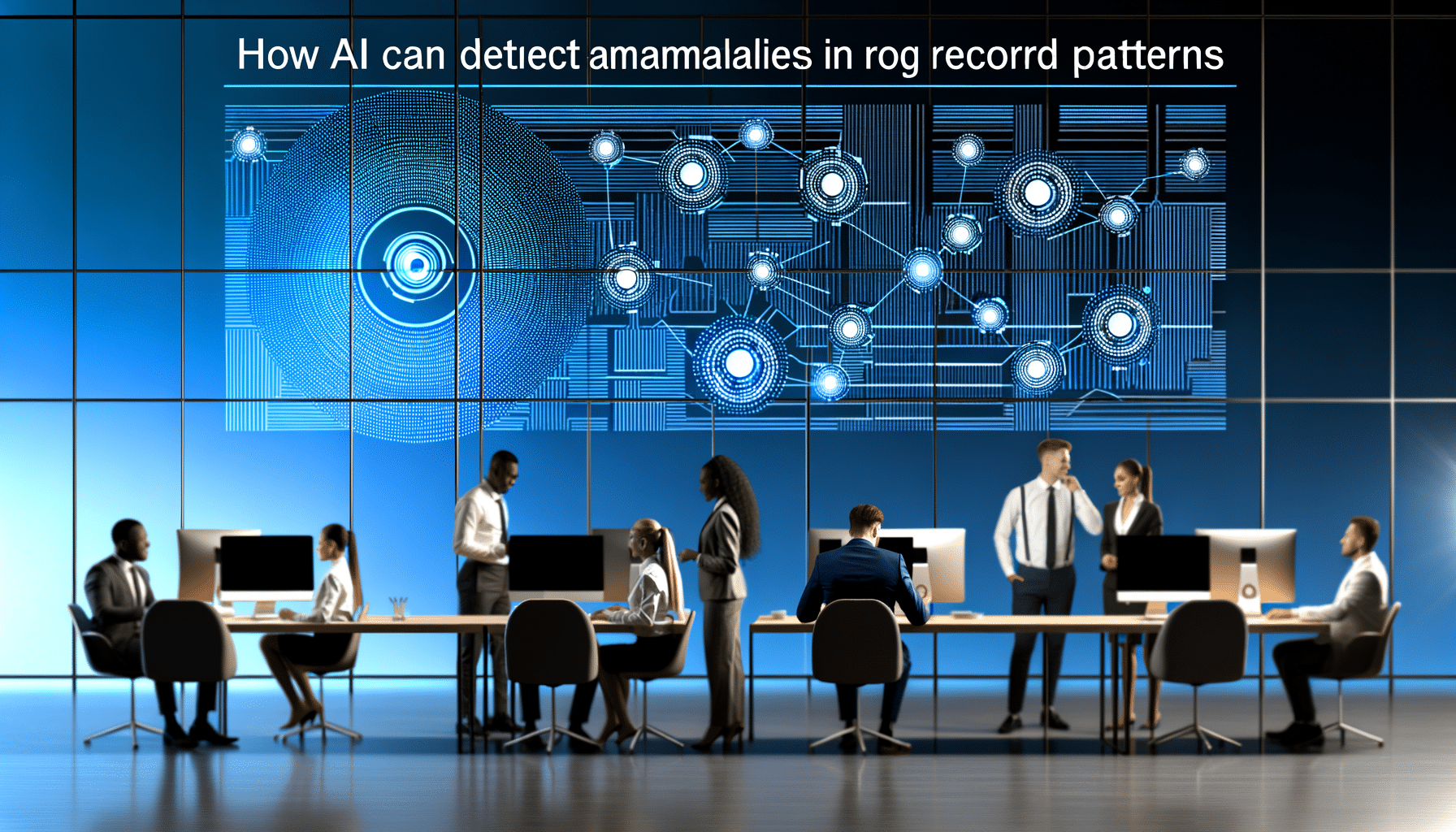- Quality Assurance
- May 4, 2023
How AI Can Detect Anomalies in Record Patterns

As I navigate the challenging yet exhilarating world of record management, I often find myself pondering the countless complexities faced by businesses today. One such complexity is anomaly detection—a critical aspect in ensuring data integrity, compliance, and operational efficiency. In our digital age where information overload is common, detecting unusual patterns in record-keeping is not just necessary; it is essential. Today, I want to delve into how integrating AI technology can revolutionize anomaly detection in record patterns, reshaping how organizations handle their data with extraordinary precision.
The Essence of Anomaly Detection in Record-Keeping
We all understand how crucial data is to any institution—be it in legal, finance, or compliance sectors. The accuracy of this data directly impacts decision-making and strategic planning. However, lurking within these copious records can be anomalies—unusual deviations from the norm that could signal anything from fraud to simple human error.
This is where the power of AI comes into play. With the capability to learn and adapt, AI systems can identify these anomalies much faster and more accurately than traditional methods, safeguarding the integrity of your records. The question isn’t whether you should integrate AI, but rather how effective AI can be at identifying discrepancies early enough to mitigate potential damage.
How AI Pinpoints Anomalies with Precision
Thanks to machine learning algorithms, AI analyses vast amounts of data to establish what constitutes ‘normal’ behavior within your record patterns. Once this baseline is created, deviations, however subtle, can be flagged instantly. The process involves:
- Pattern Recognition: AI continually monitors data streams to identify underlying patterns. These patterns help the system understand what typical records look like.
- Real-Time Monitoring: AI tools operate in real-time, scrutinizing data updates as they occur. Unusual activities are detected and alerts are issued instantly.
- Machine Learning: By learning from existing data and previous anomalies, AI becomes smarter and more refined over time. This dynamic learning capability facilitates accurate anomaly detection.
Implementing this technology means you can act swiftly to rectify inconsistencies, ultimately ensuring data quality and compliance.
The Strategic Advantage of AI-Powered Anomaly Detection
Incorporating AI to detect anomalies doesn’t just safeguard against errors; it transforms anomaly detection into a strategic advantage:
- Enhanced Compliance: Automated detection ensures you remain compliant with industry standards, whether it’s GDPR, HIPAA, or SOX. By maintaining records free from discrepancies, AI facilitates adherence to these regulations.
- Operational Efficiency: AI-driven tools free up human resources by automating the monitoring of records. This allows teams to focus on strategic tasks rather than routine data verification.
- Data-Driven Decisions: With accurate and trustworthy data, decision-making becomes less of a guessing game and more a science, driven by integrity-rich insights.
Case Study: Real-World Impact of AI in Record Management
Let’s consider a hypothetical scenario of a finance department dealing with transactional data. Typically, reviewing these transactions manually would be time-consuming and prone to errors. However, with AI-powered anomaly detection integrated into their records management system, unusual transactions that fall outside predefined patterns are flagged instantaneously. This early detection allows for prompt investigation, mitigating potential financial discrepancies before they become significant issues.
The application of AI in this context not only protects against fiscal loss but also streamlines compliance, ensuring audits are smooth and trouble-free.
The Future of Anomaly Detection with AI
I’ve always believed that technology is only as valuable as the impact it creates. AI’s role in detecting anomalies in record patterns is a testament to this belief. As we advance, the synergy between AI and record management will only strengthen, fostering environments where data accuracy is a given, compliance is straightforward, and operational efficiency is maximized.
For those responsible for the crucial task of managing records, embracing AI isn’t just about staying current; it’s about pushing the boundaries of what’s possible. As we continue to innovate at RecordsKeeper.AI, I am excited to witness this transformation and to contribute to an era where smart record management is synonymous with strategic empowerment.
The path forward beckons us to leverage these advancements, and I invite you to join me on this journey. For those interested in diving deeper into AI, anomaly detection, and the potential awaiting your records, feel free to reach out or continue exploring our resources. Together, we can redefine what’s achievable in record management.
Toshendra Sharma is the visionary founder and CEO of RecordsKeeper.AI, spearheading the fusion of AI and blockchain to redefine enterprise record management. With a groundbreaking approach to solving complex business challenges, Toshendra combines deep expertise in blockchain and artificial intelligence with an acute understanding of enterprise compliance and security needs.
Related Posts

Automated Error Detection in Record Keeping Using AI
Explore how AI identifies and corrects errors in record-keeping systems.
- April 14, 2023
Archives
- January 2025
- December 2024
- November 2024
- October 2024
- September 2024
- August 2024
- July 2024
- June 2024
- May 2024
- April 2024
- March 2024
- February 2024
- January 2024
- December 2023
- November 2023
- October 2023
- September 2023
- August 2023
- July 2023
- June 2023
- May 2023
- April 2023
- March 2023
- February 2023
- January 2023
- December 2022
- November 2022
- October 2022
- September 2022
Want to get more content like this?
Signup to directly get this type of content to your inbox!!
Latest Post
Document Control for Equipment Maintenance
- January 20, 2025
Managing Records for Multiple Clients
- January 19, 2025
Handling Conference Documentation
- January 18, 2025
Setting Up Department Record Reviews
- January 17, 2025





